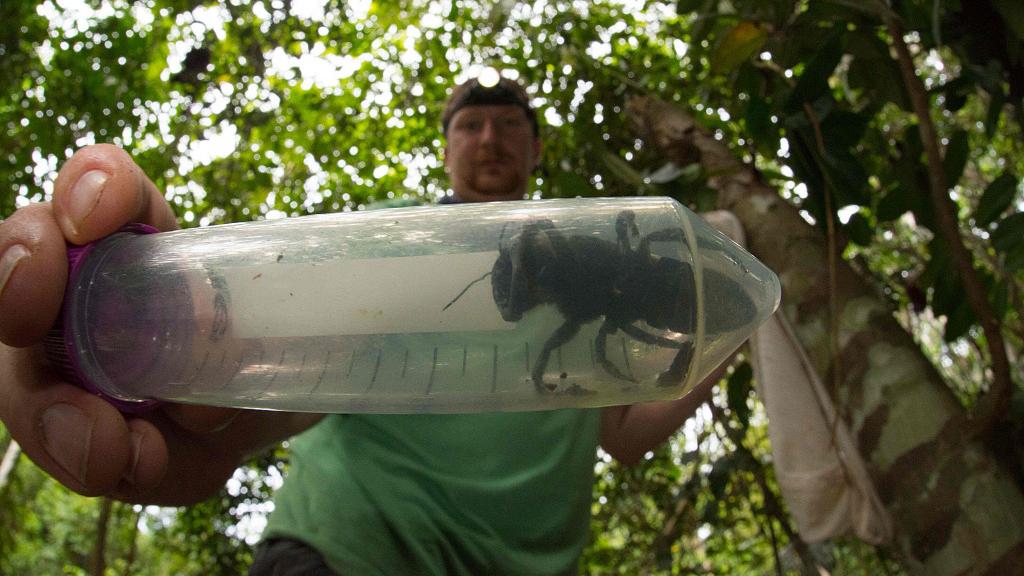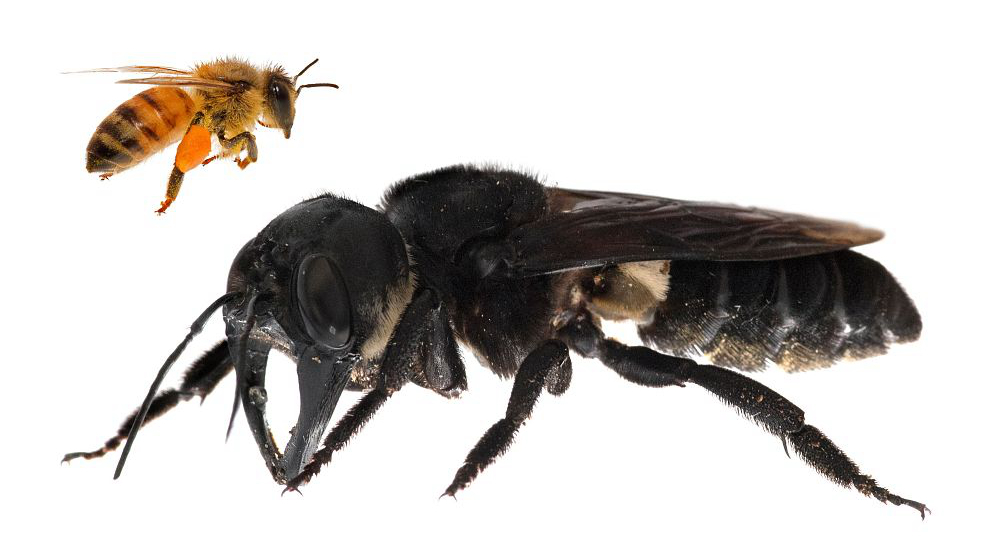

The largest bee species in the world has been rediscovered alive on Indonesia's North Moluccas islands, after missing for 38 years and being feared extinct. A single female Wallace’s giant bee (Megachile pluto) was found living inside a termites’ nest in a tree by an international team of biologists after it reportedly remained elusive for decades. /VCG Photo

The female giant bee can measure nearly 4cm in length, as long as a human thumb, and has immense jaws like a stag-beetle. It has only been recorded by scientists three times after it became known to science in 1858, when it was found by British entomologist Alfred Russel Wallace on the Indonesian island of Bacan. /VCG Photo

Copyright © 2018 CGTN. Beijing ICP prepared NO.16065310-3
Copyright © 2018 CGTN. Beijing ICP prepared NO.16065310-3